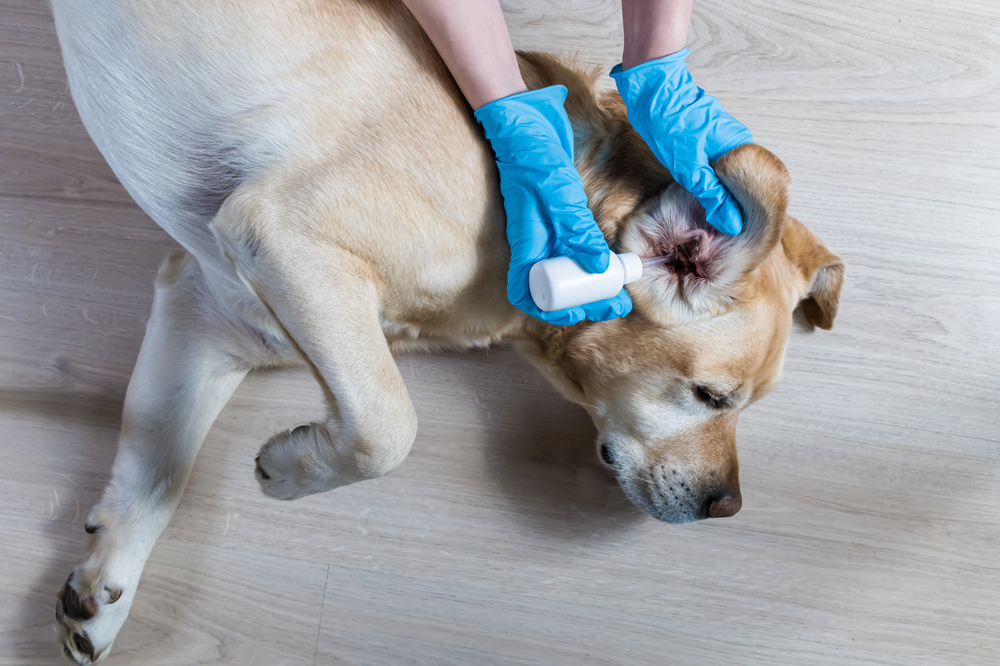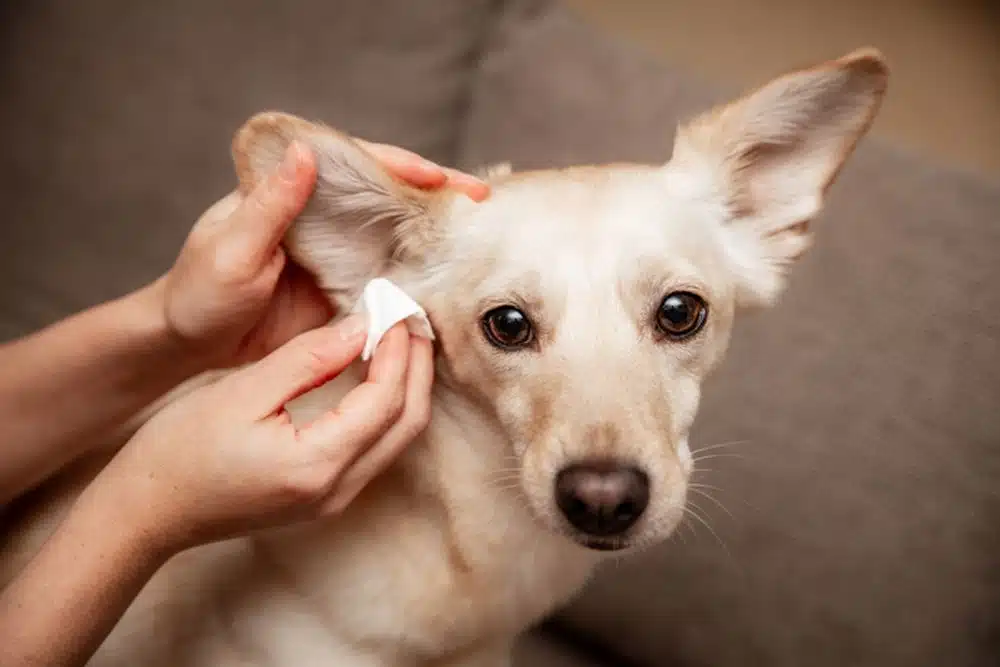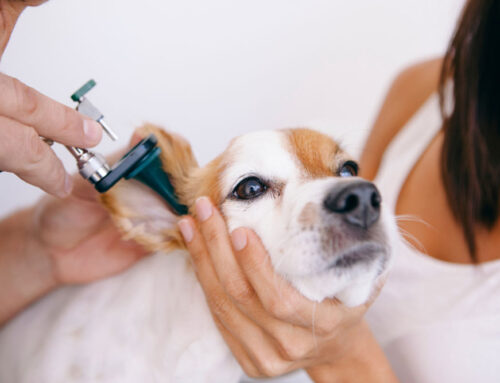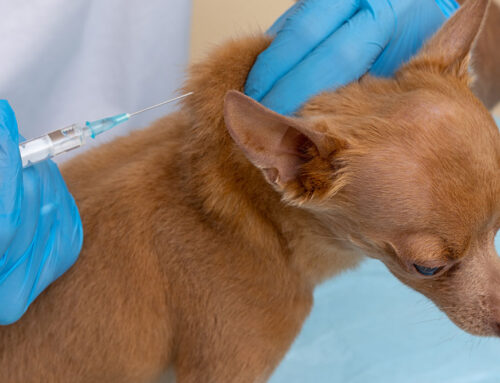Your pet’s ears do a lot more than just hear. They help with balance, express emotion, and connect them to the world around them. But because of their unique shape and structure—especially in dogs and cats—those ears are also vulnerable to infections, inflammation, and injuries. Left untreated, even a minor issue can become a chronic or painful condition.
At Cupertino Animal Hospital, we take pet ear problems seriously. With advanced diagnostics, minimally invasive treatments, and a dedicated Ear Care Center, our team is here to help you address ear issues early—and manage them with precision and compassion.
Why Pet Ear Problems Are So Common (and So Easy to Miss)
Pet ears aren’t built like human ears. With their L-shaped canals and delicate internal structures, it’s easy for moisture, allergens, parasites, or foreign bodies (like foxtails) to get trapped. This makes early signs of ear disease easy to overlook—or hard to reach with standard treatment.
Common causes of ear problems include:
- Allergies (environmental or food-related)
- Bacterial or yeast infections
- Ear mites
- Water trapped from swimming or bathing
- Foxtail seeds or other foreign bodies
- Hormonal or autoimmune disorders
- Tumors or polyps
- Overuse of OTC ear cleaners or past medications
Even things like grooming products or leftover soap from a bath can trigger inflammation. That’s why we encourage pet owners to pay attention to even subtle changes—and act sooner rather than later.
Spot the Symptoms: When to Get an Ear Exam
You don’t have to wait for a full-blown infection. If your pet is showing any of the following signs, it’s time for a closer look:
- Head shaking or tilting
- Scratching or pawing at the ears
- Sensitivity to touch around the ears
- Redness, swelling, or warmth
- Bad odor from the ears
- Visible discharge (especially brown or black debris)
- Changes in behavior or balance
Some issues, like ear mites or deep infections, may not be visible on the surface. And in some cases, especially in cats, there may be no obvious symptoms at all.
Curious about what might be going on? Start with our article: What’s That Gunk? A Comprehensive Guide to Brown Debris in Your Dog’s Ears
Ear Conditions We Commonly Treat
From first-time ear infections to chronic or surgical cases, we’ve seen it all. Conditions we diagnose and treat include:
- External and middle ear infections
- Foxtail and foreign body removal
- Ruptured ear drums
- Ear polyps and tumors
- Ear hematomas
- Myringitis
- Eustachian tube disorders
- Cholesteatomas
- Chronic or complicated cases requiring CT imaging or endoscopy
See the full list of Ear Treatments at Cupertino Animal Hospital
Advanced Diagnostics: Going Beyond the Surface
Standard otoscopes only show a limited view of the ear canal. That’s why we use 4K video otoscopy and cone beam CT scanning to evaluate the deeper structures of your pet’s ears with clarity and precision.
These tools help us:
- Identify infections behind the eardrum
- Detect tumors or bony changes in the middle ear
- Remove debris, foxtails, or biofilm with minimal trauma
- Confirm a diagnosis before starting treatment
Learn more about how we diagnose complex cases in: A Deeper Look: How Pet Ear Infections Are Diagnosed
Treatment Options: Personalized, Precise, and Pet-Friendly
We don’t believe in guesswork—or one-size-fits-all treatment. Our approach is tailored to your pet’s specific condition, breed, and anatomy.
Treatment options may include:
- Topical medications (antibiotics, antifungals, anti-inflammatories)
- Sedated deep ear cleaning for better penetration and relief
- Laser therapy for inflammation
- Surgery for hematomas, tumors, or chronic cases
- Ongoing care plans for pets with allergies or recurrent infections
If your pet panics during treatment or can’t tolerate ear drops, we can help. We offer sedated treatments to ensure they’re comfortable—and you’re not left struggling at home. More on that here: Revolutionizing Pet Ear Care: Dr. Kureshi’s Unique Approach
Some Pets Are Simply More Prone to Ear Trouble
Certain breeds have a higher risk due to their ear shape, genetics, or skin sensitivities. That includes:
- Cocker Spaniels
- Golden Retrievers
- French Bulldogs
- Labradoodles and Goldendoodles
- Basset Hounds
- Poodles and Poodle mixes
- Outdoor cats (especially those exposed to ear mites)
Find out if your pet is on the list: 7 Dog Breeds and Types Prone to Ear Infections
Preventing Future Ear Problems
Once you’ve dealt with an ear infection, you never want to go through it again. Good news: many cases are preventable with the right habits and early intervention.
Our top tips:
- Dry ears thoroughly after swimming or bathing
- Avoid foxtail-heavy areas (especially in spring and summer)
- Use only vet-approved cleaning solutions (never Q-tips or home remedies)
- Monitor for signs of food or environmental allergies
- Schedule regular ear exams—especially for high-risk pets
Need help building a maintenance plan? Start here: The Essential Guide to Keeping Your Pet’s Ears Healthy

When to Call Us
If your pet is in pain, shaking their head constantly, or has discharge or odor from the ears—don’t wait. Early treatment leads to faster recovery, less stress for your pet, and fewer repeat infections.
Request an appointment today to get to the root of the problem and build a clear plan forward.
Contact Cupertino Animal Hospital
Explore All Ear Treatment Options
Your pet deserves to be comfortable. You deserve peace of mind. Let’s treat the cause—not just the symptoms—with expert ear care that’s as compassionate as it is comprehensive.















Leave A Comment